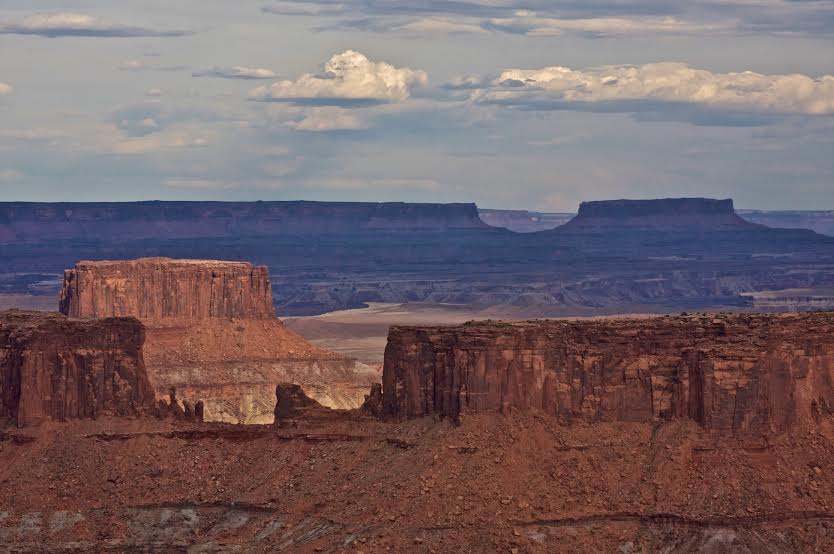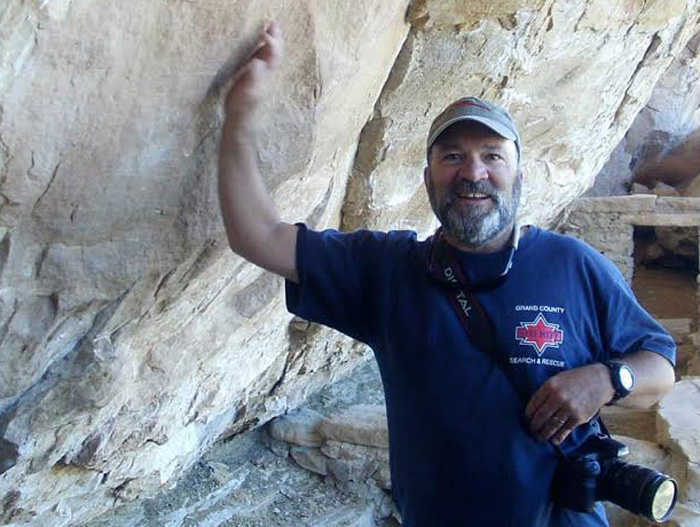
Travel in the desert presents unique challenges and hazards to those unfamiliar with the arid environment.
Desert guide, Utah search and rescue first responder, Hayduke Trail co-founder and ECCO Ambassador, Mike Coronella knows a lot about how to safely and responsibly enjoy the desert. He shares these skills with clients on a daily basis through his company Deep Desert Expeditions and agreed to pass along his most important desert safety tips.
But before we dig in, a public service announcement from Coronella: For such a rugged place, the desert is incredibly fragile. Cryptobiotic soils are living soil crusts that exist all across the deserts and play a key role in a healthy desert environment. Try and avoid “busting the crust,” which damages the soil and takes years to recover. Travel only on durable surfaces (rock), in sandy wash bottoms or clearly established trails and roads to protect the desert for generations to come.
So be respectful of the environment and use these 16 tips to stay alive in the Desert.—Sean McCoy

1 — Vehicular travel. Make sure your vehicle is in tip-top shape to be in the desert and make sure you are prepared for a vehicular malfunction — overheating, flat tires, getting stuck in sand or high-centered. They will all shut you down. Make sure you have enough water for an unplanned delay or hike out.
2 — Know where you’re going and share your plans with others. This is just common sense and can save your life in event of even minor accidents.
3 — Have a map and compass. If you get into the depths of a canyon, your GPS (and cell phone) probably won’t work.
4 — Wear proper clothing. Cultures that have spent millennia in the desert sun and heat don’t leave much skin exposed to the sun. Clothes will most likely be your only shade. Keep the tank top in the gym as skin coverage is essential. A breathable wide brim hat will be your best friend out there. Light colors also help.
5 — WATER. Let’s repeat this one: Water. Staying hydrated is hard in the desert. It’s impossible without enough water. Carry a minimum of 4 liters/1 gallon per person per day and a lot more if engaged in a strenuous pursuit. Don’t just bring it, drink it!
6 — Hiking/trekking poles. Many brush off the idea of poles — at their risk. Walking in the desert is an active pursuit; rocks, cactus and ledges force you to look down while walking. Poles give you the ability to look around a bit while traveling in rough terrain. They also help keep your torso moving fluidly and you more efficient. If you do trip, you can usually catch yourself with poles before hitting the ground.
Flip-flops and sandals are for the beach. Wrap your feet in something protective. The sun, sand, gravel and cactus all conspire to harm your skin; sweaty feet in a slippery sandal can cause problems in dicey terrain. As an Ambassador I wear boots and hiking shoes from the company year-round.
7 — Boots/Shoes (not sandals). Flip-flops and sandals are for the beach. Wrap your feet in something protective. The sun, sand, gravel and cactus all conspire to harm your skin; sweaty feet in a slippery sandal can cause problems in dicey terrain. As an ECCO Ambassador I wear boots and hiking shoes from the company year-round. I’ve been a big fan of the BIOM Hike boot. They provide a good level of protection without being restrictive.
8 — Sunglasses. Wear them, and make sure they have good UV protection. Polarized lenses are recommended.
9 — Avoid the midday sun. It’s the death star in the summer. Avoid strenuous activity in the hottest part of the day; that’s what the siesta is for! Most people are not properly conditioned to be out in such heat and they simply cook. If you don’t see lizards running around, you might want to consider why. Even they hide from the midday sun.
10 — Be prepared for sand. It gets in everything, goes through mesh shoes, through your tent’s screens, into your eyes and ears and nose and mouth and food and water. Be prepared: four season tents will keep out the sand in a wind storm. Don’t forget the Q-tips!
11 — Electrolytes. I mentioned how important water is, but electrolytes are also critical to a happy body. You need to replace all those salts and minerals that you’re sweating out. Products like SaltStick are easy to carry and do the job; salty foods help, too.
12 — Cold nights. Nights are colder than most people expect; the clear, dry air doesn’t insulate well. Carry some layers for after sunset.
13 — Floods. Canyons are carved by flash floods — if rain is imminent, know you have a way out of the danger zone: you will not survive being hit by a wall of rocks, lumber and mud pushed by a raging torrent of water. Best yet, avoid hazardous canyons if rain is a possibility. Never pitch a tent in a canyon floor even on a clear night as floods can travel many miles from the source and hit without warning.
14 — Water purification. When taking water from natural sources (don’t rely on this unless you know for a fact that the area will have standing water) you may find purification tablets preferable to filters. The sediment load in desert water can clog filters quickly. One trick that helps is to pre-filter the water though a coffee filter or cloth before running it though a purification filter. Tablets are a good backup in case a filter gets too clogged to function. Whatever you decide to use, make a plan to purify water and carry the needed equipment (bottles, tablets or filters). If by some life or death error you have no purification and find yourself in the desert with no water, drink anything you can find. It’s a lot easier to get over a stomach ailment than death and most of the little nasties that’ll make you sick take a while to incubate, long enough that you can hopefully get to civilization before falling ill.
15 — Time. Everything slows down in the desert. Distances are deceptive—the desert is a big place and is harder to travel in than most environments. It may take longer to reach a destination than expected. Don’t have a tight schedule and take time to take in the silence, the breadth, to enjoy, to breathe!
16 — And finally, (more) WATER! Drink it! Drink lots of it! Modern hose/bladder systems are great, but remember to blow any water back out of the hose after drinking to avoid a shot of hot water when you want a drink later. A half-filled frozen bladder topped off with cold water is ideal in the summer. A frozen bottle resting against the bladder will also keep your water cold and you’ll get some ice-water in the bottle, too! I simply can’t overemphasize the danger of dehydration. It kills people out there. DRINK ENOUGH WATER.
—Mike Coronella is a desert guide and an ECCO Ambassador based in Utah.
